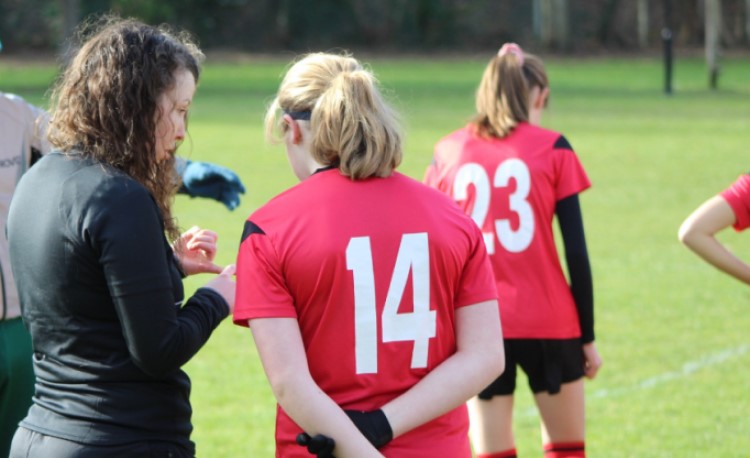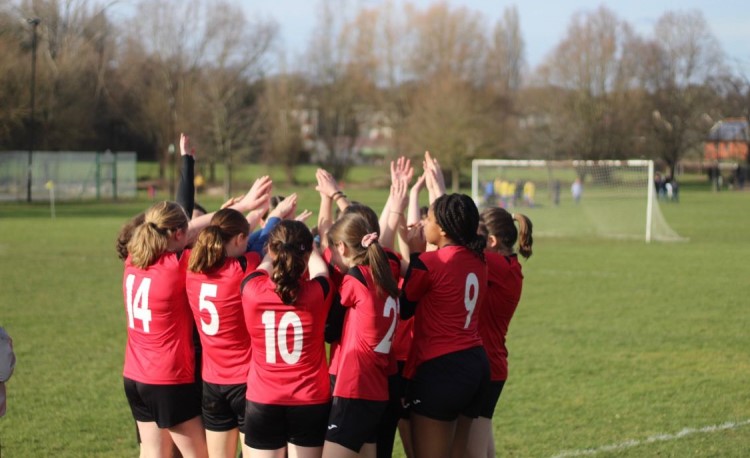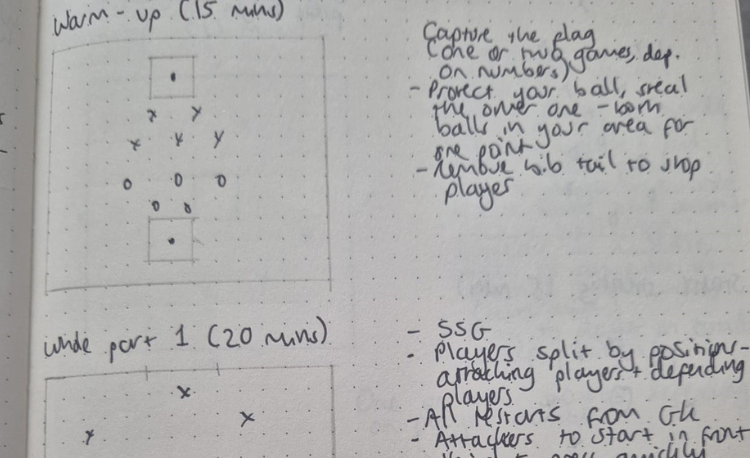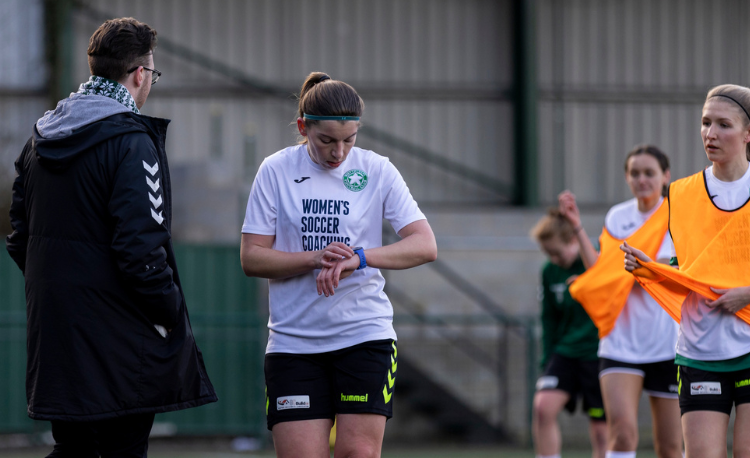Creating a healthy, happy environment
You will get the best from your players if they are part of a team culture that is inclusive, welcoming, safe and also allows for mistakes, says Steph Fairbairn.
The phrase ‘positive environment’ is used frequently in soccer.
However, it is not something which just occurs. Like everything else in coaching, a positive environment is something which has to be built and then consistently worked on.
What is a positive environment?
A positive environment is one that is safe, both physically and psychologically.
It is also one where people feel comfortable enough to be themselves and where they can grow and be challenged without fear of judgement or repercussions.
A positive environment is not one in which nothing goes wrong – that isn’t real life. Things still go wrong, but those involved are able to come together to move past them.
It is important to note that, in a soccer context, a positive environment isn’t just for the players. It should extend to everyone involved in a team or club, including you as the coach.
How can you create a positive environment?
One way to think about your role as a coach is to see yourself as the facilitator of an environment.
The environment doesn’t belong to you – it belongs to everyone, the players in particular – but a key part of your role is to foster and maintain it.
Aside from the absolute musts of making sure you are up to date with safeguarding procedures and ensuring appropriate space and equipment is used, there are numerous things you can do to shape the environment you are coaching in.
Get to know your players
Knowing players’ names – and, in particular, the proper way to pronounce them – is an absolute minimum.
If you struggle with remembering names, just let the players know and remind them that you are happy to be corrected – they deserve to have their names remembered and said properly.
Find out more about your players both on a football level, such as what position they prefer and why they got into the game, and on a personal level. Get to know their other interests, what their family situation is and who their friends are on the team.
"Find out more about your players, both on a football level and on a personal level..."
The more you know about your players as individuals, the better you will be able to tailor how you work with them, on and off the pitch, and the more trust they will have in you.
Say hello
This may sound incredibly basic, but don’t underestimate how meaningful a greeting can be.
A simple, ‘Hi, [name]. How was your day?’ can start off a training session or match on a positive note for a player.
Keep it equal
It is human to naturally gravitate towards certain personalities; think about why you have chosen your particular friends over the years. It makes sense, then, that the same thing will happen with your players.
There might be a player with whom you find it easier to chat, or who approaches you more than the others do.
That doesn’t mean you should give them more of your time than you would other players. Each one deserves your attention, and it is your job to make sure they get it.

Similarly, some players may occasionally need more attention than others. They may, for example, be going through something for which they will need your support.
It is important to remember that even the players that seem to need less focus and support may, in fact, need it, and you should make sure they know it is there.
If giving individual players equal attention is something you want to do, then consider tracking it.
As coaches, we write down notes about our sessions – why not keep a tick list of who you have spoken to at each session?
Be prepared
On top of everything a coach already has to do in a session, chatting to your players may seem like an added task. In truth, it should be the most important one.
If you are prepared ahead of time, with a session planned and equipment packed and ready, you have already done the majority of the football-thinking needed for your session. This means you have the mental space to be able to engage.
Create structure and routines
Consistency breeds security. Players need to know the big things - that they are training at regular times and that the same coaches will be there – and also some of the smaller things, such as having a specific area for them to put their water bottles in.
If things are going to change, try not to change too many of them all at once. And talk about them – tell your players what those changes are and why they are happening.
Set boundaries and expectations
Every environment needs a defining framework. As a coach, you can set this, but it will be even more effective if you work it out with your players.
Think about what you want – players, for example, listening when you are speaking, everyone picking the cones up at the end of the session, players offering each other feedback in a positive manner.
Then ask your players what they want – how do they want to be spoken to? What things do they see as unacceptable? How should they be dealt with?
Write these boundaries and expectations down as a sort of code of conduct, so that everyone can refer back to them when required.
It is natural for young people to push and challenge these boundaries and expectations. When this happens, it is your job to think about why, and remind people of what was agreed.
Show up as your true self
The unique value you have as a coach is who you are, and not imitating who you have seen others be.
In the same way that you want to see your players be their authentic selves, they want that from you. They want to know what you find funny, what kind of music you listen to, what kind of day you have had.
Obviously, there is a line. Young players, for example, don’t need to know the ins and outs of your terrible day. But it could be useful for them to hear you say you made a mistake, or you are feeling a bit down.
"Just as you want your players to be their authentic selves, they want that from you..."
It is important for players to see that coaches have emotions, too.
Role model behaviours
It may not always seem like it, but your players look up to you. They are extremely perceptive to how you behave and what you do.
Always be there earlier than your players. Be prepared. Treat all players as equals. Don’t swear. Do all of the things you ask of your players – it shouldn’t be one rule for you and another for them. Hold them accountable and allow them to do the same for you.
Plan non-football events
Can you have a social event every couple of months? It doesn’t need to be anything elaborate - just a space where the players can exist together outside of football.
Where possible, celebrate birthdays. Again, it doesn’t have to be big – just say a few words about the player whose birthday it is and ask the other players to sing to them.
Review and seek feedback
In order to keep an environment positive, it needs monitoring.
That can look like reflections after sessions, regular check-ins with players, or even things like anonymous surveys.
As we described in an earlier issue, getting someone else’s perspective on things can also be incredibly useful. It is hard to be objective when you are inside it – get another coach to observe your environment and let you know what they see.
Get yourself a support network
Nurturing a positive environment can be tough. It requires time, effort and difficult conversations.
To do that to the best of your ability, try to check in with your own mental health. Make sure you have people around you with whom you can talk about some of the challenges, and lean on when things get tough.
Related Files
Newsletter Sign Up
Coaches Testimonials

Gerald Kearney, Downtown Las Vegas Soccer Club

Paul Butler, Florida, USA

Rick Shields, Springboro, USA

Tony Green, Pierrefonds Titans, Quebec, Canada
Subscribe Today
Discover the simple way to become a more effective, more successful soccer coach
In a recent survey 89% of subscribers said Soccer Coach Weekly makes them more confident, 91% said Soccer Coach Weekly makes them a more effective coach and 93% said Soccer Coach Weekly makes them more inspired.
*includes 3 coaching manuals
Get Weekly Inspiration
All the latest techniques and approaches
Soccer Coach Weekly offers proven and easy to use soccer drills, coaching sessions, practice plans, small-sided games, warm-ups, training tips and advice.
We've been at the cutting edge of soccer coaching since we launched in 2007, creating resources for the grassroots youth coach, following best practice from around the world and insights from the professional game.







